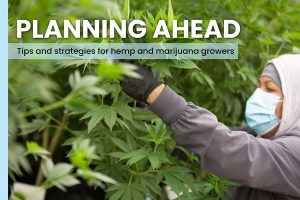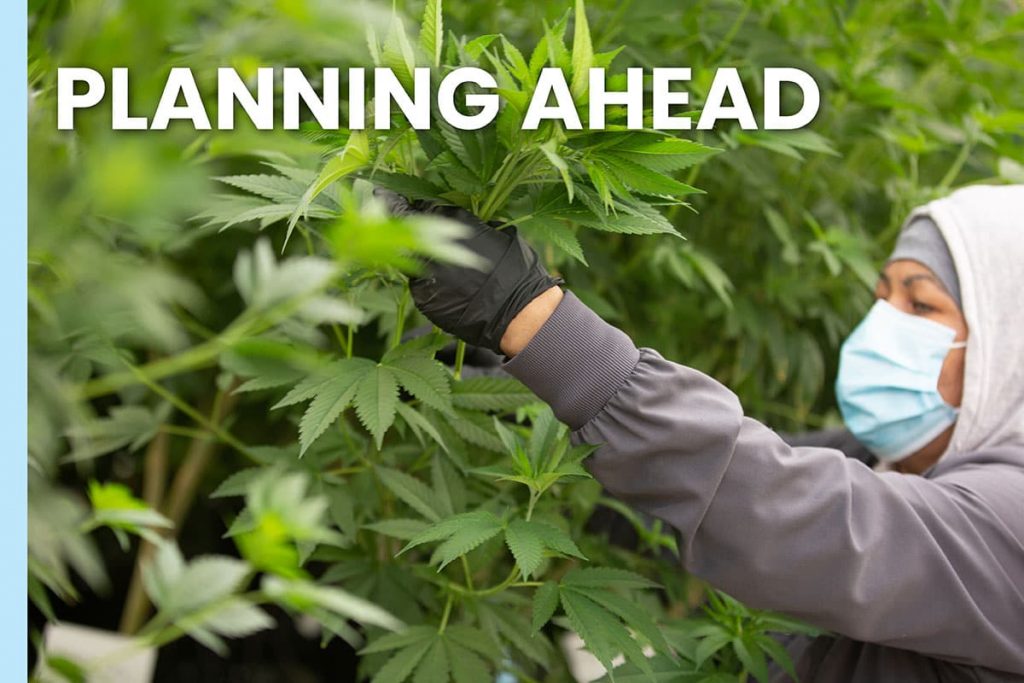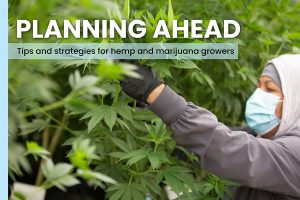How to prepare outdoor hemp and marijuana fields for growing season
FeaturedHempIndustrial Hemp NewsMarijuana Laws, Regulations, & Politics March 10, 2021 MJ Shareholders 0



(This is the first installment in a series focused on cultivation planning for hemp and marijuana growers. Look for additional stories on handling young plants, stocking up on supplies, fertigation and other topics throughout the year.)
As outdoor marijuana or hemp growers get ready to sow seeds or plant clones or seedlings in the coming weeks, it’s important to prepare the soil via proper testing, conditioning and preparation.
Crop yield and performance is impacted by field selection and soil preparation, making where and how cultivators grow just as important as what they grow.
And, generally, because marijuana and hemp crops are such similar crops, the same soil health practices work for both.
“The difference in THC and hemp when it comes to production and soil prep is really the market value,” said Skip Newcomb, farm director at East Fork Cultivars, a producer in Takilma, Oregon, that grows both lower-THC marijuana and hemp for CBD production.
“That’s the big difference for us is, we put more into it, knowing that we’re going to get that out of it.
“But essentially it’s the same exact plant – it grows the same, it looks the same, although I would say THC genetics sometimes do have a little more vigor.”
Soil type
Farmers – especially those who produce other crops – could be tempted to pick their worst field to produce marijuana or hemp because they might consider it a riskier crop.
But choosing a flat field is key to good yield at harvest, especially if mechanical harvesters will need to navigate that terrain, said Eric Singular, director of development and communications for International Hemp, a hemp-genetics company in Denver.
Young plants need enough moisture when they’re first planted to ensure that seeds can germinate and emerge. But once crops are established, too much moisture can be detrimental.
Despite the advice to choose a flatter field, cannabis doesn’t like “wet feet,” which is to say it doesn’t like to sit in water. So one of the first things growers need to assess is the soil type and the drainage situation.
Ideally, growers will have porous, loamy soil, but marijuana and hemp can grow in any type of soil, as long as it has proper drainage, according to Scott Propheter, a farmer and CBD executive in North Carolina.
“I’ve seen fantastic crops grown on straight red clay,” he said. “I’ve seen fantastic crops grown on extremely sandy soils.
“But I think the basic principle that that applies across all of them is they were well-drained fields.”
Testing, testing
The first step growers need to take to get ready for growing season is to order soil tests, which can reveal information such as soil alkalinity, nutritional imbalances and contaminants, including heavy metals and pesticides.
Many growers test soil after crops are harvested in the fall so they can add any necessary amendments or plant cover crops before the winter, Singular said.
Late winter to early spring, when fields are staring to dry out, is also a good time to test soil.
But be sure to account for enough time to order soil amendments and have them delivered, as this can take some time depending on the location of the grow.
According to Singular, test fields in the spring when the temperature is around 40 degrees Fahrenheit to determine soil temperature.
In southern regions of the United States, some hemp growers learned the hard way in 2020 that direct-sowing seeds in the ground when the soil temperature is 80-90 degrees Fahrenheit means the seeds won’t germinate “because the seeds just bake in the ground,” Singular said.
Testing for contaminants such as residual pesticides and heavy metals is important for flower, biomass and grain crops.
This is especially the case for growers pursuing U.S. Department of Agriculture organic certification for hemp or a comparable local certification for marijuana.
However, some states don’t require such certification, even though they test crops for contaminants after harvest, according to Newcomb.
Noel Garcia, chief operating officer and head crop production consultant with TPS Lab in Edinburg, Texas, said he advises growers to test for heavy metals before they plant anywhere.
“I can’t stress enough how important a soil test is,” Garcia said.
“Hemp is a huge bio-accumulator, meaning it accumulates heavy metals, and a lot of times people would totally disregard that before they even consider planting or, even worse, before they even consider buying a piece of property.”
He said there are some areas in Texas and other parts of the country that have high levels of arsenic or cadmium. Growers might not realize that until they harvest and try to sell.
“Then the processor will send a sample to the lab and test for heavy metals … and come to find out you’re very high in arsenic and cadmium, and now you lost your entire crop, and you won’t be able to sell it.”
Weed-free fields
Planting in “clean” fields is another key success strategy, though there are few herbicides, if any, that are registered for use on hemp through the U.S. Environmental Protection Agency.
No herbicides are cleared for use on marijuana crops, so growers don’t have the option to “burn down” weeds with chemicals – as farmers do before planting traditional crops – to ensure a clean field before planting.
Growers can naturally mitigate weeds by planting as early as possible to let the plants get established before weeds start growing.
“As soon as the soil temperatures get warm, if weeds are growing in the field, that means the crop could be growing in the field,” Singular said.
“If you’re getting in the ground right when those soil temperatures are starting to go north of 40 degrees, you’re going to beat the weeds. And that is by far the most environmentally friendly way to manage your weeds, just getting in early and getting that canopy established.”
For grain and fiber hemp varieties, growers can also try planting 5-10 more pounds of seed per acre than they need to cut out room for the weeds to grow.
Laura Drotleff can be reached at [email protected].
MJ Shareholders
MJShareholders.com is the largest dedicated financial network and leading corporate communications firm serving the legal cannabis industry. Our network aims to connect public marijuana companies with these focused cannabis audiences across the US and Canada that are critical for growth: Short and long term cannabis investors Active funding sources Mainstream media Business leaders Cannabis consumers










No comments so far.
Be first to leave comment below.